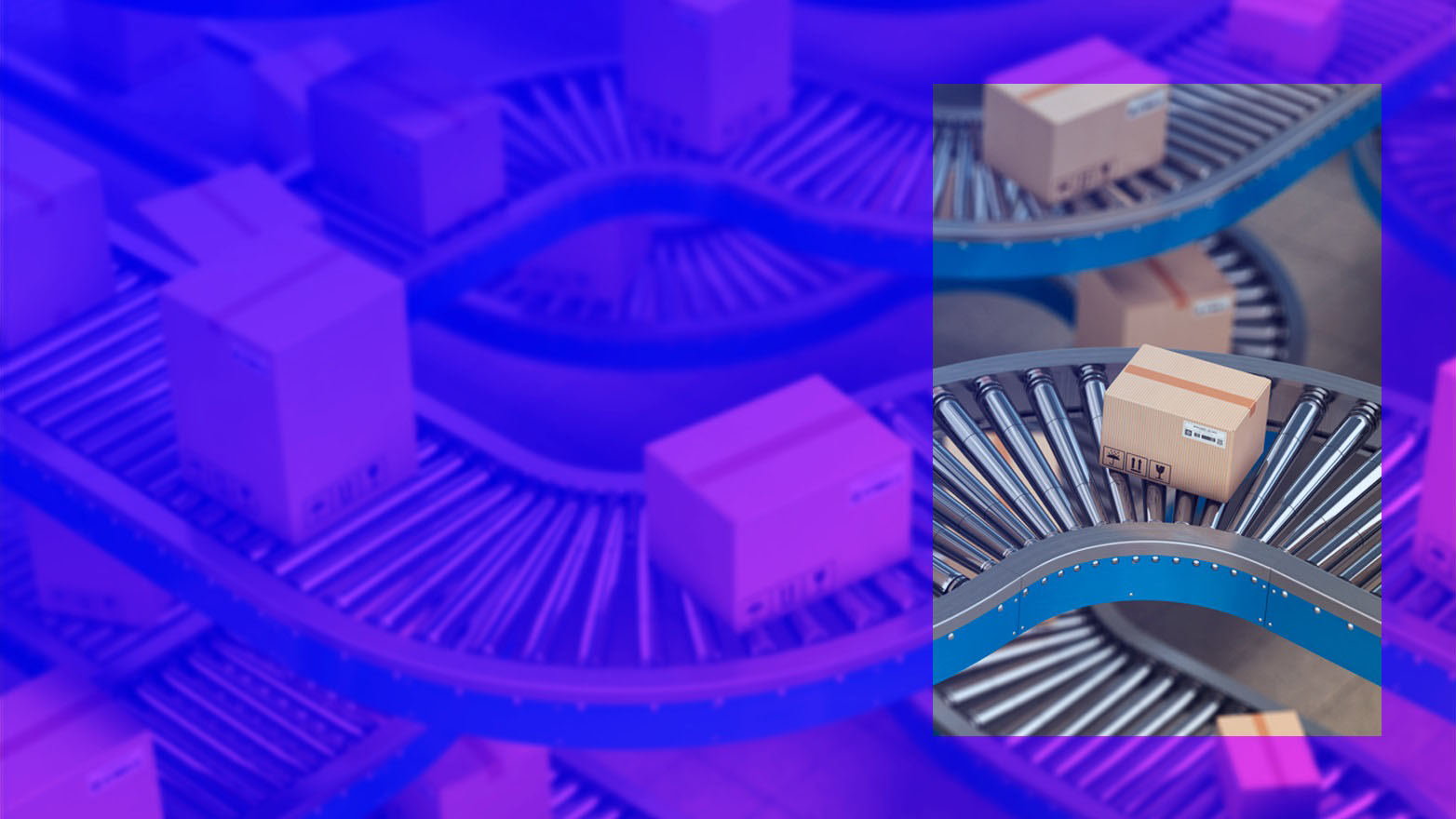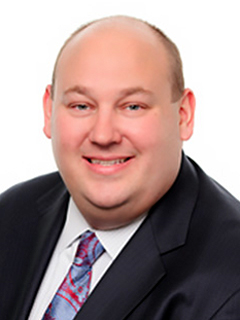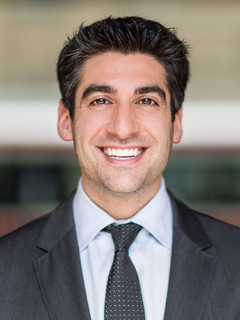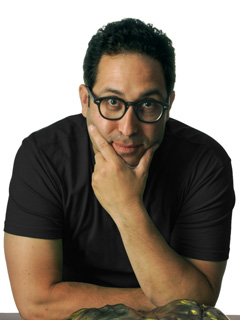Podcast Transcript
David Lipkus: Most people, when they think of counterfeiting, the first thing that comes to mind is money and passports. And the truth is anything and everything is counterfeited.
Aaron Muderick: If you're a one person doll maker in Illinois, and you're a $20 billion toy company, you have the same problem. The people who are knocking off products are working as fast as they can to stay ahead of our enforcement efforts.
Kelly Combs: There can be thousands of products and thousands of different sellers. So half of the problem is getting the right data
HOST: This is Speed to Modern Tech, an original podcast from KPMG. I’m Tori Weldon. Each episode, we'll bring you a problem many businesses are facing and the story of how technology was used to tackle it.
Today, the problem of tracking down counterfeit product listings -- and the technology decisions that were made to help find the fakes.
In the United States, the numbers around counterfeit products are staggering.
In 2020, US customs and border protection agents seized more than 26 - thousand shipments containing counterfeit goods. If they'd been genuine, the estimated value would be nearly 1 point 3 billion dollars.
Over the past few years, the rise of e-commerce has made it even easier to sell fake goods online -- and harder to trace the source. And while designer names continue to be a favorite target for counterfeiters, smaller businesses selling specialty items are not immune to knock-offs.
Aaron Muderick: So we make putty that's magnetic. And what does that mean, magnetic putty? It means that when you put it next to a magnet, it will crawl over to it as if it was alive.
Host: That's Aaron Muderick, the inventor and owner of Crazy Aaron's Thinking Putty. I started making putty 25 years ago and it was something I did to entertain my friends. And then eventually it became a business and I always thought of myself as just this little guy in a garage.
Host: Today, that garage has been replaced by a factory and headquarters in Norristown, Pennsylvania where they make more kinds of putty than you can imagine. Magnetic putty, scented putty, putty that’s invisible. There are even YouTube channels dedicated to reviewing it.
Thousands of toy stores sell Crazy Aaron's products, as well as big online retailers. But this success has also made Aaron's putty a target for counterfeits. He remembers the day he saw the first fake product listing online, more than a decade ago.
Aaron Muderick: I saw that my custom typeface and my product name had been copied and even better my face, my cartoon face that’s the emblem for our company, had been replaced with a picture of Snoopy. And, um, I was stunned that I had gotten to a point where maybe I was even worth copying. But it sent me into a bit of an anxiety frenzy to start digging into the Internet, looking for more and more to figure out how deep did this problem go? How far down the rabbit hole was this counterfeit issue?
Host: Aaron got a lawyer, and registered his company trademarks, phrases like Thinking Putty and Liquid Glass, both names of putty he sells. He even registered his cartoon image. And he started contacting ecommerce sites to ask them to take the counterfeit product listings down.
But finding the fakes took hundreds of hours. In a world where sellers can set up a store with a click of a mouse, there can be tens-of-thousands of products to check.
Aaron Muderick: We are very active on social media. So we see when people are posting product that they've purchased or that they're showing off and it doesn't look quite right. We might follow up and ask them questions.
Host: Even when Aaron and his staff are able to track down fake products, there is a whole process they have to go through to figure out what laws have been violated, and if they can seek compensation.
Catching all the counterfeits is next to impossible. And when customers do manage to purchase a fake version of Aaron's putty -- the damage is hard to fix.
Aaron Muderick: You have customers who receive product and the quality is not good. And they reach out to our customer service to say that they are disappointed or that it was unpleasant for them. Um, very hard to kind of repair that reputational damage.
Host: In November 2021, Aaron took his battle against counterfeits to Capitol Hill. He testified before the US Senate Judiciary committee looking into counterfeit goods. And he pleaded with the Senators to enact tougher laws to crackdown on counterfeits.
Aaron Muderick: Every time there is a counterfeit, it is taking away from someone who is playing by the rules, who has spent the time to follow the rules and do what's right. I need to focus my time and energy on our business, but it makes me go insane when I see these products out there.
David Lipkus: My earliest anti-counterfeiting memory was in the late nineties. I was 13 years old and my Dad took us on a family trip to Montreal
Host: That's David Lipkus. Growing up, his dad was a lawyer specializing in anti-counterfeiting.
David Lipkus: And he was working closely with the Royal Canadian Mounted Police at the time. And I remember going into the flea market, and I was a kid so I could go up to any of the different booths and ask questions of the vendors and take a look at what was being sold. No one would think that I was involved in any, um, law enforcement seizure. I vividly recall that there were silk screen t-shirts, there were blanks that were at the booth, and then you were able to walk up to the vendor, and ask them which logo you wanted. They would silk screen it for you, and then you would walk away with a fresh fake t-shirt.
And I recall talking to my Dad about that at 13, about how he should plan the seizure with the police, and which booths to focus on and which one had the most amount of merchandise and which ones, you know, which employees were the owners of the shops. And I remember helping him and all I wanted to do was go on the raid and he said, “Well, you can't come with us.” And I was so upset that I wasn't able to assist further with the enforcement raid. And that's my earliest anti-counterfeiting memory, and I've been continuing in this space ever since then.
Host: After tagging along on raids like the one in Montreal, David got the bug for fighting frauds.
So he decided to follow in his father's footsteps, and today, he's an anti-counterfeiting lawyer with Kestenberg Siegal Lipkus. He's represented big name brands as well as small, independent retailers, so he's seen first hand how counterfeiting has grown.
David Lipkus: Most people, when they think of counterfeiting, the first thing that comes to mind is money and passports. And the truth is anything and everything is counterfeited. Whether it's electronics, personal care products, contact lenses. What they do is try and make the cheapest version of that knockoff so it looks as close as it possibly can to the real thing. But it doesn't have the same materials, it uses substandard products that can cause issues for you as a consumer. There may be no cushioning in the shoe, for example. What a lot of the counterfeiters do is they use the stock photos that belong to the legitimate rights owner, and the consumer is going online or on their mobile device and is able to click a few buttons and have goods shipped almost immediately to their house without the consumer even knowing who they're buying their goods from. That is the counterfeiting crime of today,
Host: David says e-commerce has not only made it easy for consumers to buy counterfeits -- it's also made it pretty simple for sellers to create them.
David Lipkus: There was a high school student that set up a business selling hats to students in his class. And then he started selling hats to students in his school. And then he started selling hats to students online, and then he was caught for selling these hats and he obviously stopped selling these counterfeit hats. The reason that it's important to talk about is because how did this high school kid start a counterfeiting business selling caps? Well, we later learned through his parents that he was texting directly with the factory in China.
Now, can you imagine how unbelievable globalization is in technology that this entrepreneurial kid was able to get access to a counterfeit factory in China to order caps and start this business? But the point of the story is e-commerce has dramatically changed the way that business is being transacted and again, it's just been able to link consumers and sellers to each other around the world, which 15 plus years ago, you could never dream of thinking about in this format.
Host: The onset of the COVID-19 pandemic super-charged this shift to online shopping.
Recent data from the US Census Bureau shows ecommerce sales in the United States increased by 32 percent between 2019 and 2020.
David says more people buying online means more counterfeits. And the sheer volume makes it a tough crime to combat.
David Lipkus: Unfortunately, for every factory that’s shut down and for every e-commerce listing that's terminated, new ones appear and the problem is only growing.
I don't know how it stops. Uh, the quality of the counterfeits are getting better, which is a problem, the ease of selling, the sheer volume of sales combined with the fact that anybody, truthfully, anybody can just list an item online and sell it to anyone around the world.
How can we say that it's not going to be a growing problem? We're entering web 3.0 - now there's going to be virtual counterfeits and so how can the volume get smaller when technology's adapting and it's getting easier to sell these goods?
Host: So that's the business problem of counterfeiting. But how can technology be applied to help solve it?
This was the puzzle Swami Chandrasekaran and Kelly Combs set out to tackle. They both work for KPMG in solutions architecture, and from the beginning, Swami says it was pretty obvious that A.I. was the best tool to address the problem.
Swami Chandrasekaran: It is humanly impossible to go look at the millions and millions of products that are being sold on your platform and flag them as counterfeit or not counterfeit. Humanly is not possible.
Host: Swami got his start in AI years ago, while working on the IBM Watson project. He was part of the original engineering team, and was appointed as a distinguished engineer -- one of the highest merits awarded at the company.
Since those days, AI has kept advancing. So Swami and his team at KPMG decided to use AI to explore the problem of identifying counterfeits. They started by trying to replicate the ways humans understand online product listings.
Swami Chandrasekaran: So if you look at the sequence of events, we look at pictures, we look at descriptions, we look at reviews.
What if they were all exaggerated? What if they were not genuine? So the idea here was can we train machines, using artificial intelligence and including national language processing and other techniques, to be able to uncover these subtle nuances? It's basically how a smart human being would be able to uncover it as a fraudulent or a genuine product is what we were trying to teach a machine and go after.
Host: So that was the basic principle -- use AI and natural language processing to identify fraudulent product listings. But before they could even start, they had to figure out what were the red flags they were looking for? Here's how Kelly explains it.
Kelly Combs: If you think about any given marketplace, right, that we may shop online or on our mobile devices, there can be thousands of products and thousands of different sellers. So how to identify common trends across products and how can we assign, you know, suspicious flags that could be applicable to every product? So we tried to think about the problem a little bit differently, which is, you know, could reviews of each product be an indicator of a potential problem? Could a large price discrepancy between the manufacturer and the seller be an indicator that something's wrong? So how can we look at broader attributes versus things specific to each product.
Host: In the end, Kelly and her team came up with a few different flags to help predict if a product sold online was real or fake. They looked at product listings and how they were written. They looked at prices and price differences. And they looked at customer reviews. They had to consider a lot of complex questions.
Kelly Combs: Can I look at a general sentiment around the review? If it has a lot of boosted reviews, maybe there's something underlying suspicious about this? So kind of taking that human thinking element of how would we be thinking about the problem using human judgment, but then breaking it down by what data do we have available and how do we apply our human judgment to the data set that we have at hand
Host: Training the AI to read online product reviews critically was key. Because counterfeiters are getting better and better each year -- the technology had to be cutting edge. Swami and his team applied an open source technology by Google called bidirectional encoder representations from transformers. Also known as "berts".
Swami Chandrasekaran: So basically in a very simple sense, all of us human beings. Read text left. Right? Right. And we understand the context of what meanings are, verbs, pronouns, conjunctions. What if for hypothetical sake, what if you're also trained to read right to left? We can also start to uncover some new patterns. Right? We don't do that, but that's essentially what birds are, what bidirectional encoders are all about. You train a machine to read in both directions and you start to uncover language patterns.
Host: By deciding to use "berts" to read text, they were able to flag more listings that looked fraudulent.
Swami Chandrasekaran: I think it was a coffee mug where the reviews were flagged because it had a very similar language. Choice of words, how prepositions were used, how commas and other kinds of things were used. It was very, very similar. And, uh, it wouldn't have been very obvious, maybe for a human reader reading it would have been obvious, but we can't be going and reading millions of reviews and a machine caught it because it was made to read from both directions.
Host: Swami, Kelly and their team had to train the "berts" to understand e-commerce, and the language used in retail sales. And then there was a final data hurdle -- how to tackle all those thumbs up and emoticons that were so familiar in online reviews?
Kelly Combs: So one of the good things about AI is we can take data in non-traditional formats and put it into a structure that can be formatted and interpreted and then provide a response back.
So for example, an emoticon, a thumbs up could mean a positive review, a thumbs down could mean negative review. Before, those were just images on a page and that couldn't be transformed into positive or negative reviews. Through things like natural language processing and natural language generation, we can take images that are unstructured, we can interpret those images, and then we can apply context that a thumbs up means positive, so that data now becomes meaningful for the business to use for the purposes of analytics. So that's what's really powerful and really cool about what we can do today.
Host: Swami says once they decided on the data they would input, the next step was coming up with the AI models they would use to interpret the data.
Swami Chandrasekaran: We brainstormed a lot. And the fundamental approach we took was using what is called an ensemble approach. They don't rely on one model, one AI model, you train multiple AI models and you send the data to multiple of them. And then you combine the results. In a very simple sense, you farm out and you collect the results and take the best.
Host: All this data was collected and assessed through this ensemble approach, and a formula was applied to give the product listing a "risk score." Then came the moment of truth. Testing.
Kelly Combs: Is the algorithm going to come to the right conclusions that people do? Is it going to be predictive enough to be meaningful and accurate so that we can actually use the output? Or is it going to be a waste of time and money digging through the data and we'll find out that, you know, a hundred people can still do this better than an algorithm can
Host: In the end, the application of AI, machine learning and natural language processing allowed the KPMG team to create a "risk dashboard", using real-time data to constantly flag potential counterfeit products as they appear.
Kelly Combs: And then you can click into the counterfeit products and it's showing on that page, here are the top 10 products today that the risk threshold is signifying that it's high. And then you can actually click into a given product and see what are the underlying details that are saying that the risk level is a five. There's a huge price discrepancy today, so the discrepancy is more than 70% on the marketplace from the manufacturer price. Again could be a red flag. So you're able to actually interact with the risk scoring and the underlying data attributes for why it's being flagged as counterfeit.
Host: For many businesses, using AI to flag counterfeits is just part of their battle. Without better laws and penalties, technology can only go so far. But Swami says this project proved what AI is capable of -- and where it is headed.
Swami Chandrasekaran: End of the day, AI is about training machines. It's like training a kid. You gotta give it examples. You've gotta give it data. the more you take on, the more you have to train. So the possibilities are limitless.
Host: For technologists like Swami and Kelly, this project was not only a way to combat counterfeiting, but a way to test the predictive powers of AI.
And for people like David Lipkus, who are fighting counterfeits everyday, the ability to use AI to flag fake product listings is the kind of innovation businesses need.
David Lipkus: Brands dedicate huge budgets to try and stop this before it reaches the consumer, because the moment a consumer has a negative experience with a product, it can destroy that reputation for years. So they do everything in their power to stop that from happening, before it happens.
Host: You've been listening to Speed to Modern Tech, an original podcast from KPMG. I’m Tori Weldon.
And I'm Todd Lohr, the head of technology enablement at KPMG. If you want to learn more about the business problem and the technologies featured in this episode, go to listen.kpmg.us/TechPodcast or click on the link in the show notes.
Thanks for listening and don't forget to subscribe and leave us a review on your favorite podcasting app. We’ll be back with a new episode in two weeks.






